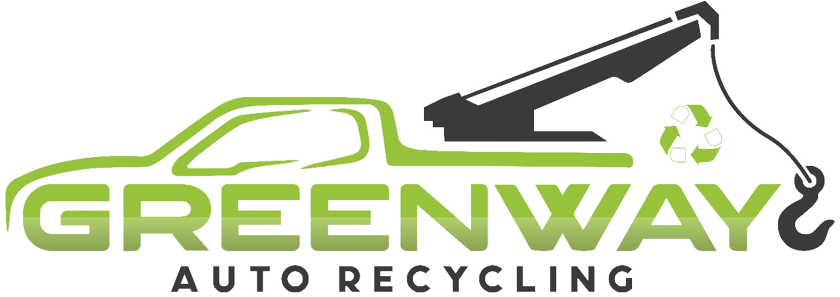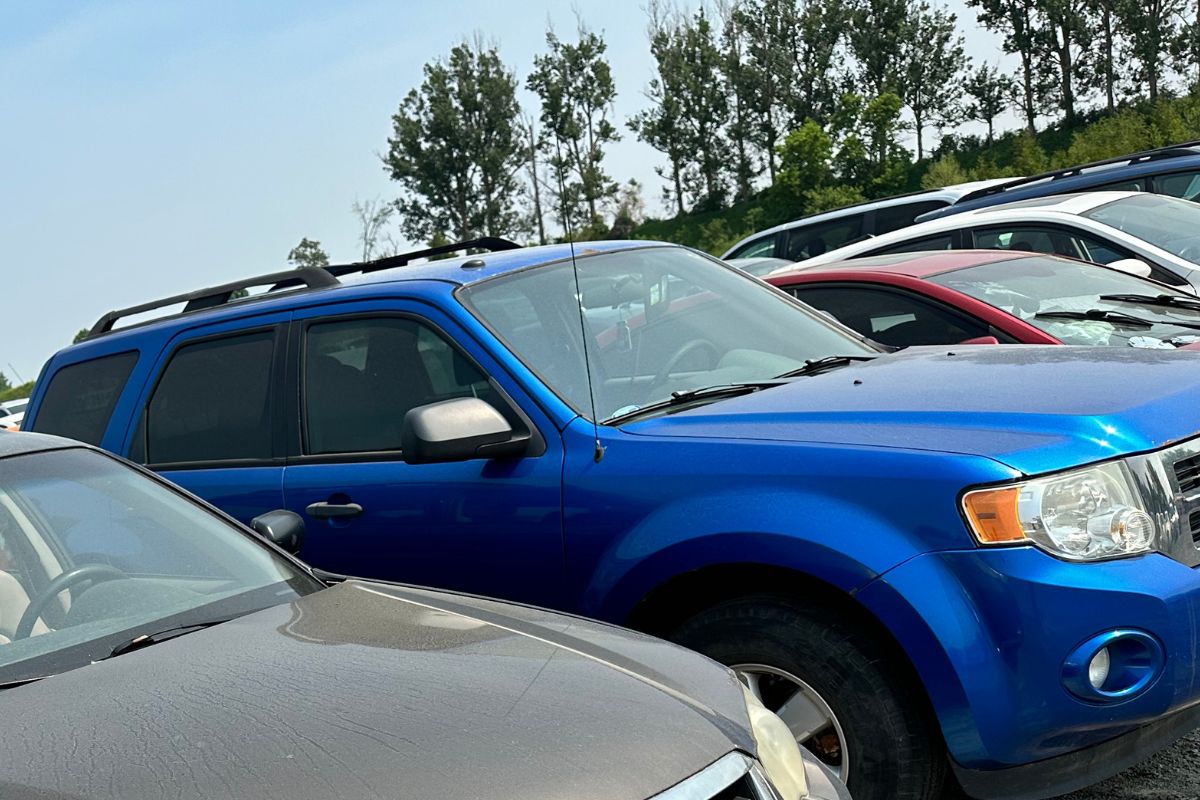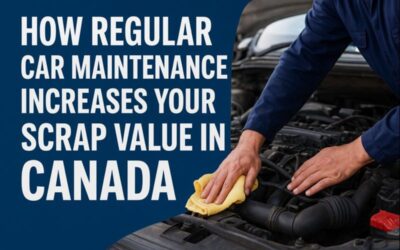Introduction
In Ontario, the shift to electric vehicles (EVs) is no longer something far off in the future. It’s happening now. As more EVs hit the roads, their end-of-life process will reshape how Ontario’s scrap-car industry operates. Many scrapyards and auto recyclers are accustomed to traditional internal-combustion vehicles
However, EVs require different materials, battery systems, and safety considerations. That means the industry must evolve. If you want to understand how EV recycling will reshape Ontario’s scrap-car market by 2030, keep reading. This change brings both challenges and opportunities for owners of scrap cars, recyclers, and the environment.
What is driving the change in Ontario’s scrap-car industry?
Several factors are pushing the auto-recycling sector to adapt. First, consumer adoption of EVs is growing. More EVs on the road means more end-of-life vehicles of that type in the future. Second, governments and regulators in Ontario are preparing for batteries and EV components to require special handling. For instance, the Ontario Automotive Recyclers Association (OARA) recognizes that modern recyclers must handle EVs with care for safety and for environmental reasons. Third, battery-recycling technologies are improving.
In Canada, programs such as the industry-led battery collection and reuse initiative by Call2Recycle show how EV battery recovery is becoming structured and scalable. All of this means the scrap-car industry in Ontario cannot stay the same; it must adapt or be left behind.
How do EVs differ from traditional vehicles in recycling terms?
EVs include high-voltage battery packs, electric drive motors, and sometimes complex electronics that are tightly integrated. The battery alone may weigh several hundred kg and contains materials such as lithium, cobalt, nickel and graphite. Research shows that “battery scrap” is becoming a strategic resource rather than simply waste. In contrast, traditional vehicles are built around steel, aluminum, conventional engine parts, fluids, and simpler battery systems. Recycling those is well-understood.
However, with EVs, the risk profile is different: safety concerns (fire hazard from lithium-ion batteries), storage and transportation of large battery packs, and the need for specialized dismantling. The industry resource “EV / Hybrid Vehicle Dismantling Resources” outlines those risks and the required training. For scrap-car yards, this means new equipment, new safety protocols, and new value calculations.
Also Read: Scrapping Electric and Hybrid Cars: What Makes It Different?
What changes will recyclers and scrap yards need to make by 2030 in Ontario?
First, they will need to install or upgrade infrastructure. That includes battery storage areas that meet fire safety rules, equipment for handling high-voltage systems, and the ability to identify and separate EV components. The OARA site emphasizes training and safe handling for EVs. Second, they will need to revise their business model. For example, battery packs and EV motors may have a higher value than scrap steel alone. Recyclers will need to calculate the value of recovered critical minerals and reused parts. Third, they will need to partner with battery recycling services and the supply chains of battery manufacturers.
The circular economy for EVs means the end-of-life vehicle is also the start of a resource chain for minerals. Fourth, record-keeping and regulatory compliance will become sharper. Ontario regulators are already reviewing frameworks for large EV‐battery systems. By 2030, a modern scrap-car yard in Ontario may look quite different from one in 2023.
Impact on consumers and vehicle owners in Ontario
If you own an EV or are considering scrapping a vehicle in Ontario, expect more options and higher returns. Because battery packs and EV motors retain their value, you may receive better offers than for a traditional vehicle of the same age and condition. However, you must also choose a recycler or scrap yard equipped to handle EVs safely. A scrapyard without the right infrastructure may decline your vehicle or offer a lower price.
Guides on how to scrap an EV in Canada emphasize the importance of finding a certified recycler and preparing the necessary paperwork. For owners of traditional vehicles, the shift means less competition for old‐style cars and more differentiation based on vehicle type. It could also refer to regulatory changes that affect how vehicles must be retired, deregistered, and recycled.
Environmental and supply-chain benefits of EV recycling by 2030
Recycling EVs instead of simply discarding them brings real environmental benefits. Recovering batteries and materials reduces the demand for primary mining of lithium, cobalt, and nickel — materials that come at a cost in terms of carbon and disruption. When scrap yards in Ontario are integrated into proper battery recovery systems, less hazardous waste is generated. Safe handling of large batteries prevents fires and contamination.
Furthermore, extracting value from end-of-life vehicles means the whole lifecycle of cars becomes more circular: manufacturing, use, end-of-life and back into raw materials. This supports provincial and federal goals related to resource efficiency and reducing greenhouse gas emissions. For the scrap-car industry, this means aligning business operations with environmental sustainability — an advantage for those who adapt early.
Challenges the industry must overcome
One major challenge is the cost of upgrading infrastructure. Battery handling equipment, storage zones, training personnel — all cost money. Smaller scrap yards may struggle to justify the expense. Another challenge is regulation and liability. Handling high-voltage systems and large battery packs introduces safety risks that require training, insurance and oversight. The regulatory framework in Ontario for large‐capacity EV batteries is still evolving.
Third, the market for recovered battery materials still needs time to mature. Although “battery scrap” is viewed as a resource, converting it into usable materials on a large scale is still in development in Canada. Finally, consumer awareness is low. Many owners of EVs or scrap vehicles may not know that scrapping an EV is different from scrapping a regular vehicle. Without that awareness, good business models may not scale fast enough.
What does 2030 look like for Ontario’s scrap-car industry?
By 2030, we could see a majority of scrap yards in Ontario being EV-capable. That means every yard has safe battery-drop zones, trained staff, and partnerships with battery recycling firms. Scrap yards will advertise themselves as “EV end-of-life vehicle specialist” alongside their traditional services. Owners will have clearer pathways: you take your EV to a certified yard, where the battery pack is extracted or reused, and the rest of the vehicle is recycled for its metal and parts. You receive a value based on both the metals and battery materials.
Scrap-car removal services, like those offered by Greenway Auto Recycling, will highlight EV recycling, plate return assistance, and safe lithium-ion handling. There will also be closer links between scrap yards and supply chains for critical minerals. Ontario may host more battery-refining or recycling facilities, which will be supported by yards. The value chain will stretch from the roadside to the refinery. Finally, debris and waste from vehicles will decrease significantly because more effective reuse and recycling processes will be implemented.
How should scrap-car owners in Ontario prepare now?
If you plan to scrap a vehicle in Ontario in the coming years, start by confirming with the recycler whether they handle EVs and high-voltage batteries. Ask explicitly: Do you remove and recycle the battery pack? Are you trained for EV dismantling? Do you offer plate return services? Maintaining accurate paperwork and ensuring a clear vehicle ownership transfer remain crucial.
Keep documentation ready. Consider the value of parts: if you have an EV whose battery is intact but the vehicle is damaged, you may get more by selling parts rather than scrapping it completely. Stay informed about incentives or provincial programs that may help offset the cost of EV battery replacement. Choose a licensed and certified recycler — one that aligns with industry associations like OARA. Start the conversation early. Even if you own a conventional vehicle today, remember — the scrap car market is evolving fast, and your timing and choice of recycler could make a big difference.
Conclusion
By 2030, the scrap car industry in Ontario will not resemble its current state. The rise of EVs brings new materials, advanced recycling methods, and entirely new value chains. For vehicle owners, recyclers, and the environment, this shift presents both challenges and opportunities.
If you are planning to scrap your car, choosing a certified and experienced recycler who understands EV handling is important. Greenway Auto Recycling in Ontario stands out for its safe and reliable scrap car removal services, expert EV recycling process, and quick plate return assistance. They make the entire experience simple and rewarding, giving you fair value for your end-of-life vehicle while ensuring it is recycled responsibly.





